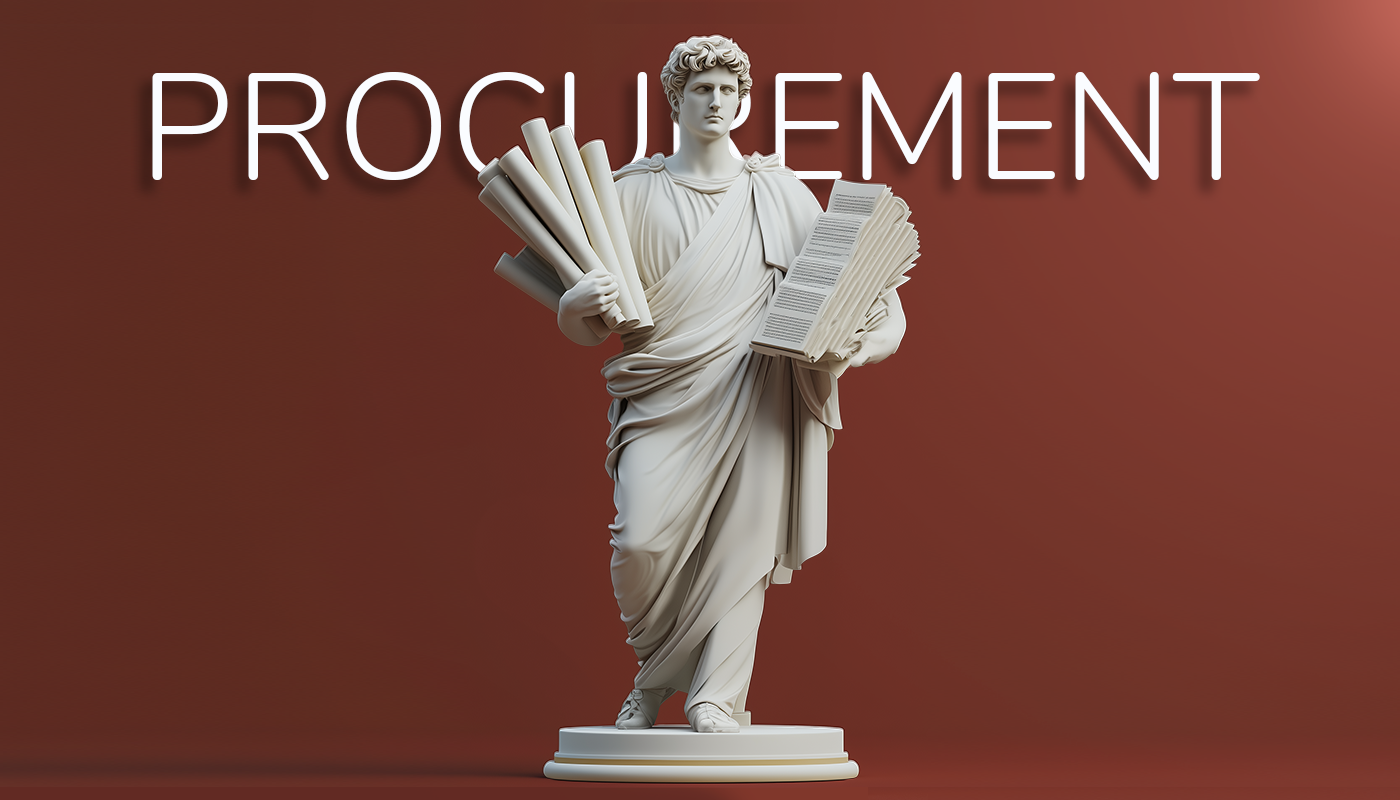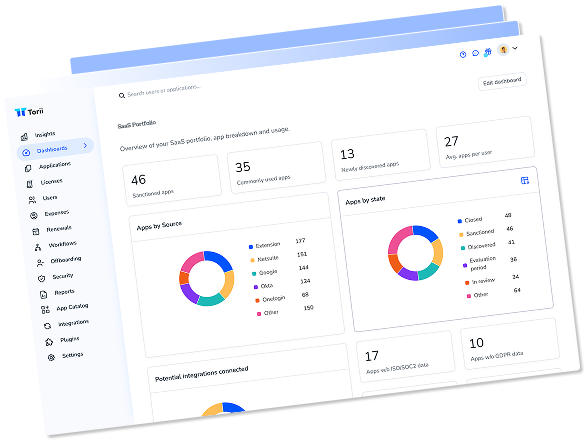“You cannot mandate productivity; you must provide the tools to let people become their best.” — Steve Jobs
Is Procurement the unsung hero or rigid gatekeeper? The answer is, a bit of both. This vigilant group ensures that every dollar spent is invested in tools, resources, and materials that push the business forward. What some see as rigidity is what can often save a company from financial disaster. They’re obsessed with controlling costs, maintaining thriving relationships with vendors, and negotiating a contract that would make a lawyer weep with envy.
But today, that attention to detail can feel like a bottleneck to other departments looking for a new tool or application. So, if you’re in IT and want to introduce a new tool, like a SaaS Management Platform, to the company tech stack, you’d be wise to build a bridge of collaboration with Procurement.
In this article, we’ll dive into the details about what matters most to Procurement and how you can gain their trust and earn their buy-in for your next project.
Procurement Professionals: The Dealmakers
What they care about: Cost Control, Contract Negotiations, and Supplier Management.
Like a Chessmaster, procurement professionals are always several steps ahead. They anticipate and outmaneuver costs to negotiate the most favorable deals possible, all while preserving relationships with key vendors. It’s a tightrope walk, a balance of intellectual and emotional intelligence.
If you want to have success when introducing your project to procurement, you’ll need to keep things things in mind.
Strategic alignment is everything.
If you’re pitching a SaaS Management Platform, you’re in luck! You’re introducing a tool that can help multiple groups within the organization—including procurement. The important thing is, you talk about the project as it relates to the whole organization. Not just one or two teams. How does this tool bring value to the company, and how does it align with the long-term goals of the organization?
Talk about outcomes, not features.
This advice applies to every buy-in conversation out there. Don’t talk about features; talk about outcomes. What does this project or tool accomplish for the good of the company? Will it eliminate a problem or optimize an opportunity? Talk about how the tool enables that kind of outcome.
For example, Procurement is often frustrated by surprise contract renewals. A SMP like Torii has a number of features to make that process easy and automatic. However, you should talk about the outcome of visibility and control over contract lifecycles and how that can impact the bottom line. Better yet, if you have specific examples (like an overpriced contract that got auto-renewed), use that example to illustrate the outcomes.
Zeroing In on What Truly Matters
Outcomes matter, but you need to know which outcomes matter the most. That means focusing on the problems that keep procurement up at night.
One way to do this is to understand how your procurement team looks at their top goals. For example, with cost optimization, procurement teams often apply a Total Cost of Ownership (TCO) Analysis. This analysis examines how much something costs to buy, deploy, use, and maintain. That means that even something with a low price tag can be expensive in the long run.
By recognizing the frameworks that they use, you’ll better understand their priorities. Once you know that, you can earn their buy-in by talking about the outcomes that truly matter the most.
The Procurement Outcomes That Truly Matter
Often, the top outcomes can be described as “we must” statements. These are obstacles or problems that must be addressed for the sake of long-term success. Many of these statements deal with software, especially SaaS, as these tools are costly, complex, and difficult to assess.
Here are some examples of top problems that procurement managers face with cloud applications.
“We’re spending too much on applications.”
If cutting costs is a priority, SaaS licenses present a golden opportunity—organizations often overspend by 30% or more due to over-provisioned software. If this is a problem for your team, an SMP equips you with tools and insights to slash expenses, assist during renewals, and identify which apps add value.
“We don’t have visibility into software usage and contracts.”
A foggy view of software assets can lead to unnecessary spending and compliance risks. An SMP offers crystal-clear visibility into all SaaS applications, including usage stats and contract details, empowering procurement to make informed decisions and negotiate better deals.
“We don’t have sufficient data during contract negotiations.”
Solid data is your secret weapon in negotiating favorable terms. An SMP provides real-time usage analytics, cost breakdowns, and benchmarking data, giving procurement professionals the upper hand during renewal discussions.
“We often miss renewal dates until it’s too late.”
Missing renewal deadlines can lead to automatic renewals with unfavorable terms and surprise costs. An SMP comes to the rescue by setting up workflows for renewal reviews, sending timely notifications to stakeholders, and even detecting sneaky auto-renewal clauses in contracts. This keeps you ahead of the game, ensuring you’re always prepared to negotiate the best deals without any last-minute scrambles.
“We have too many unsanctioned apps.”
The average organization juggles around 600 apps, many of which fly under procurement’s radar. This leads to financial waste, compliance headaches, and security vulnerabilities. An SMP helps unearth shadow IT, consolidate redundant applications, and enforce purchasing policies, aligning software procurement with organizational goals.
These challenges might not perfectly capture every procurement situation, but they highlight common obstacles professionals face. To earn their buy-in, focus on what matters to them: pinpoint their struggles, understand what hinders their productivity or KPIs, and address those specific pain points. By aligning your solutions with their priorities, you’re more likely to gain their trust and support.
Putting it all together—sample message:
Ok, you’re now equipped with a better understanding of your Procurement team’s priorities and how you might help them achieve their goals. But how do you start the conversation?
First, know your contact.
Determine who can support this initiative and who would benefit from its success. An excellent contact would be someone who sees this technology as a way to align IT with procurement’s strategic initiatives better. Some example contacts would be the company’s Chief Procurement Officer (CPO), Procurement Director / Head of Procurement, or the Category Manager (IT Procurement).
Existing rapport is best.
If you’ve shown a reputation for commitment to projects and reliability, you will have much more success when asking for support. After all, no one wants to back an erratic project owner.
Structure your message.
You’ve heard it before, but when you write a message to your teammate, you want to get to the point quickly. (They’re busy, remember). Use this template to structure your message:
Hi [team/name], 👋
[hook—why they should read on]
[state the shared problem or need]
[introduce your solution]
[provide relevant evidence or benefits]
[timeline or urgency]
[next steps]
[thanks]
Best,
[your name]
Now, let’s see how that looks in practice. You can use this message, but remember, a personalized message related to your team’s specifics will be much more effective!
Hey [Name],
I've been thinking about how our departments can collaborate to strengthen our organization's cost control and procurement efficiency.
With the rapid increase of SaaS applications across the company, we're both facing challenges in managing expenses, negotiating favorable contracts, and ensuring all software aligns with our strategic goals.
By mapping our SaaS landscape, I believe we can get better visibility into the applications we're procuring, eliminate redundancies, and identify opportunities to negotiate better terms with vendors.
Through this process, I believe we’ll learn a lot about the tools we use, who uses them, and whether they are actually worth the cost we pay!
We've noticed a significant rise in new applications being adopted outside official procurement channels, so it's important we address this soon.
Would you be open to meeting next week to discuss this further?
Thanks for considering this, and I look forward to working together on this.
Best,
[Your Name]
Breaking Walls—Building Bridges
Procurement hates silos. By reaching out in a collaborative spirit, you’ll demonstrate a willingness to work together on an important project that both teams will appreciate. Just remember:
- Keep it relevant
- Focus on outcomes—not features
- Show empathy for their priorities and pains
- Encourage dialogue
By building bridges with other teams, you improve not only your chances of buy-in but also your standing within the company. In time, you’ll be seen as a leader willing to work with others and drive innovative solutions directly impacting company priorities.
Good luck!

